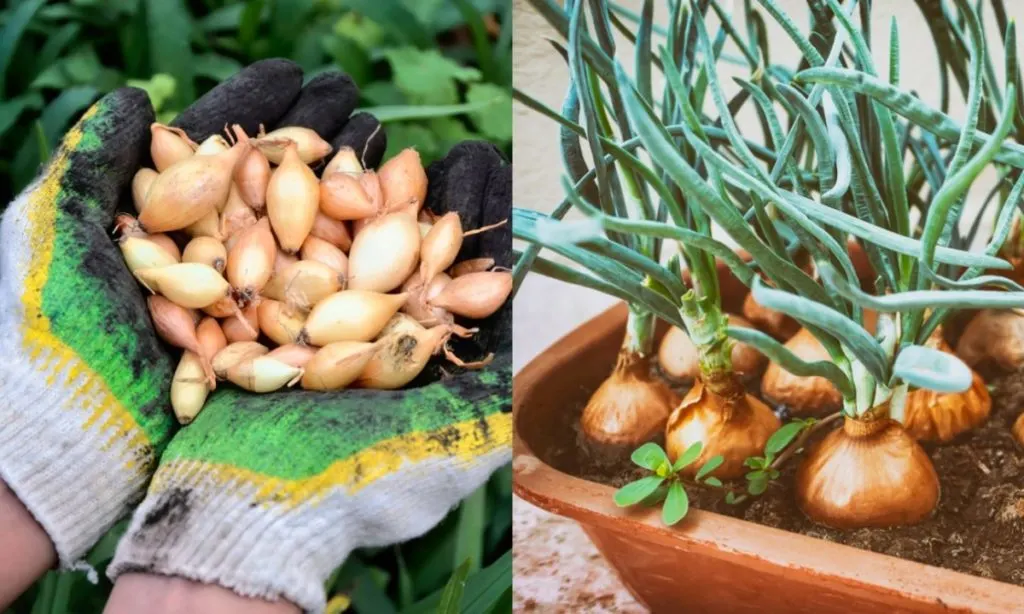
Strongly flavored and incredibly versatile, onions (Allium cepa) are a hardy, cool season crop closely related to garlic, leeks, and chives.
Onions have been cultivated and selectively bred for at least 7,000 years. Although its geographic origins are unknown, onions are believed to be native to Iran, India, and Asia.
Raw, sautéed, pickled, roasted, caramelized, and braised – onions are delectable no matter which way you slice it. The entire plant is edible too; use the green tops in soups, salads, and stock.
Easy to grow and with dozens of varieties to choose from, they also have a long storage life that will keep you in onions throughout the winter.
About the Onion Plant
Although most onion types are biennial, they are usually treated as annuals and are harvested in their first growing season.
Once planted in the soil, onions send out fleshy, tubular, hollow, flattened bluish green leaves.
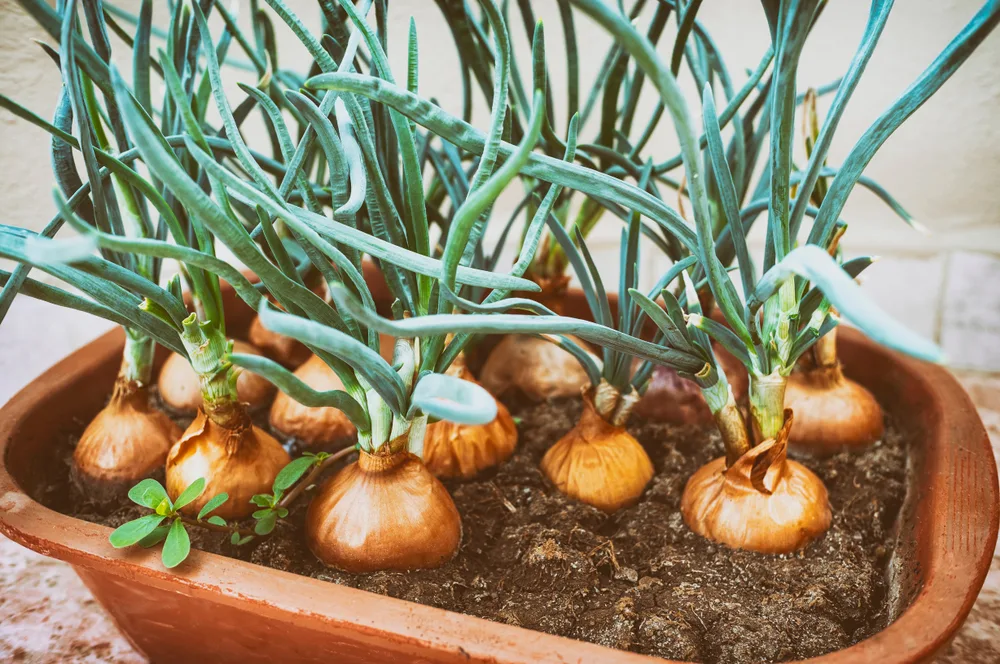
As the season progresses, the bulb below ground swells in size. Each leaf that appears up top signifies each ring in the bulb below. The larger the leaf, the larger the ring.
While onions can be harvested in spring for a smaller vegetable that is milder in taste, waiting until autumn to pull them up means a larger bulb and much more pungent flavor.
Onions and Day Length
Most bulbing onions are affected by day length – or the number of sunlight hours they receive each day. These sunlight hours signal to the onion when to stop forming green tops and switch production to bulb growth below the surface.
The type of onion you choose should correspond to the day length in your geographical location:
Short day onions begin forming bulbs when day length is between 10 to 12 hours. Short day onions are best grown in the southern part of the United States below the 36th parallel north.
Short day onions are typically very sweet, perform best planted in hardiness zone 7 and above, and mature in 110 days. Varieties include White Bermuda, Sweet Red, Yellow Granex, White Granex, and Red Burgundy.
Long day onions begin forming bulbs when day length is between 14 to 16 hours. Long day onions are best planted in northern states, above the 36th parallel north.
Long day onions have a long storage life when properly dried, are hardy in zones 3 to 7, and mature in 90 to 110 days. Varieties include White and Yellow Spanish, Walla Walla, Red Marble, and Red Zeppelin.
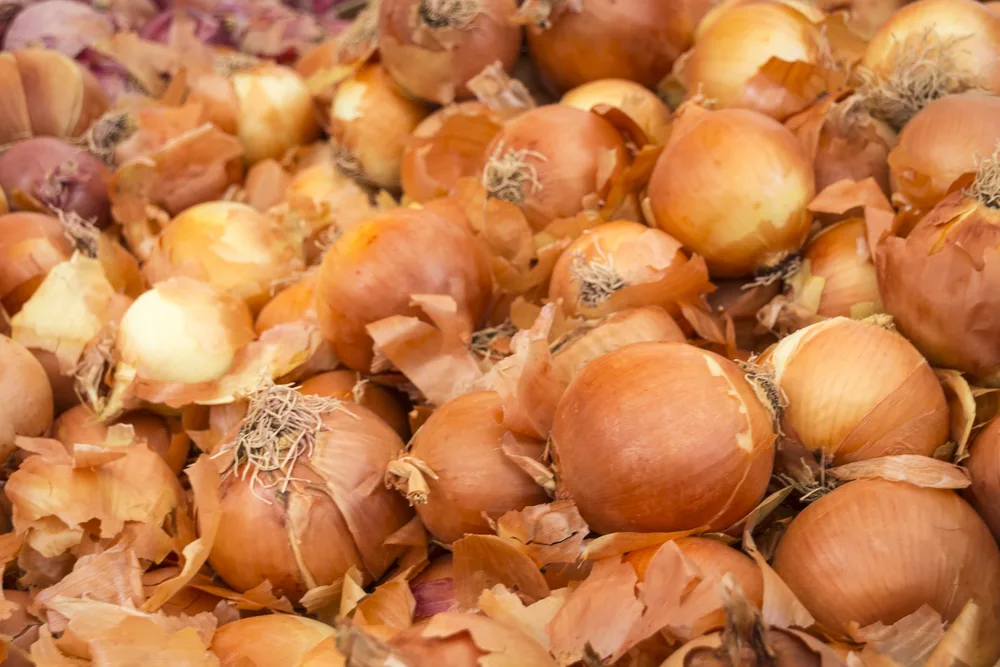
Day neutral onions begin forming bulbs when day length is between 12 to 14 hours. Day neutral onions grow well on either side of the 36th parallel north.
Day neutral onions tend to be very sweet, mature in 110 days, and will grow in any hardiness zone but typically do their best in zones 5 and 6. Varieties include Candy Onion, Super Star, Red Candy Apple, and Monastrell.
Perennial Onions
Although many of the most popular types of onions are biennials we treat as annuals, there are a few varieties of perennial onion that you can plant once and enjoy a multitude of harvests:
Egyptian Onions
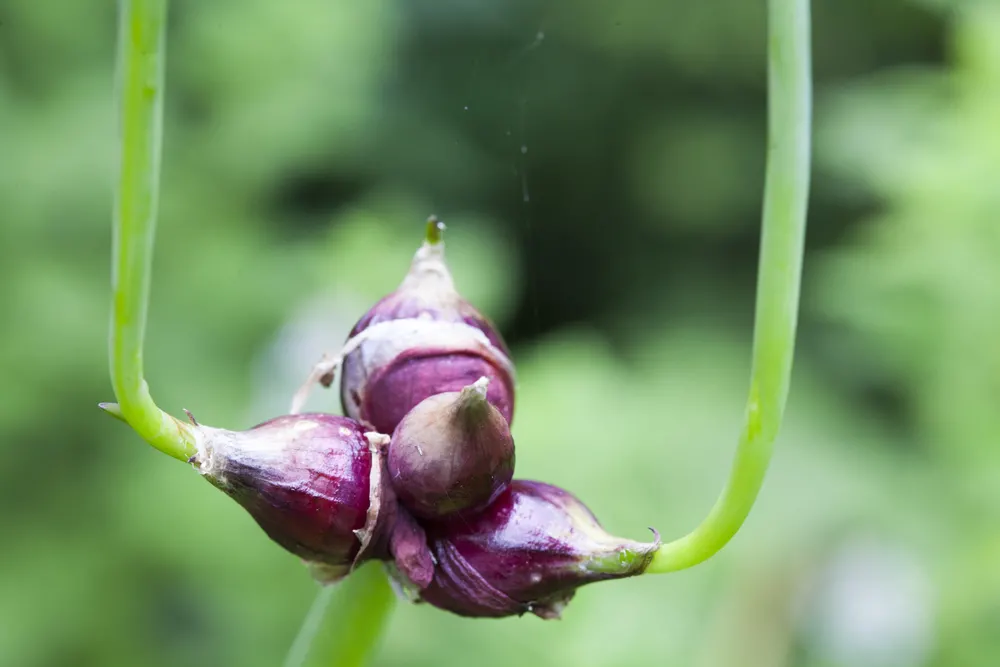
Also known as tree onions and walking onions, Egyptian onions (Allium x proliferum) produce clusters of small bulbs at the tops of their leaves where flowers would normally be in regular onion types.
Once the bulblets are too heavy for the leaves to bear, they fall to the ground to take root. When left to their own devices, these onions will literally walk across your gardenscape.
Hardy in USDA zones 5 to 9, simply plant the baby bulbs where you would like them, and in the meanwhile enjoy the pungent, reddish, elongated bulb from the mother plant.
Potato Onions
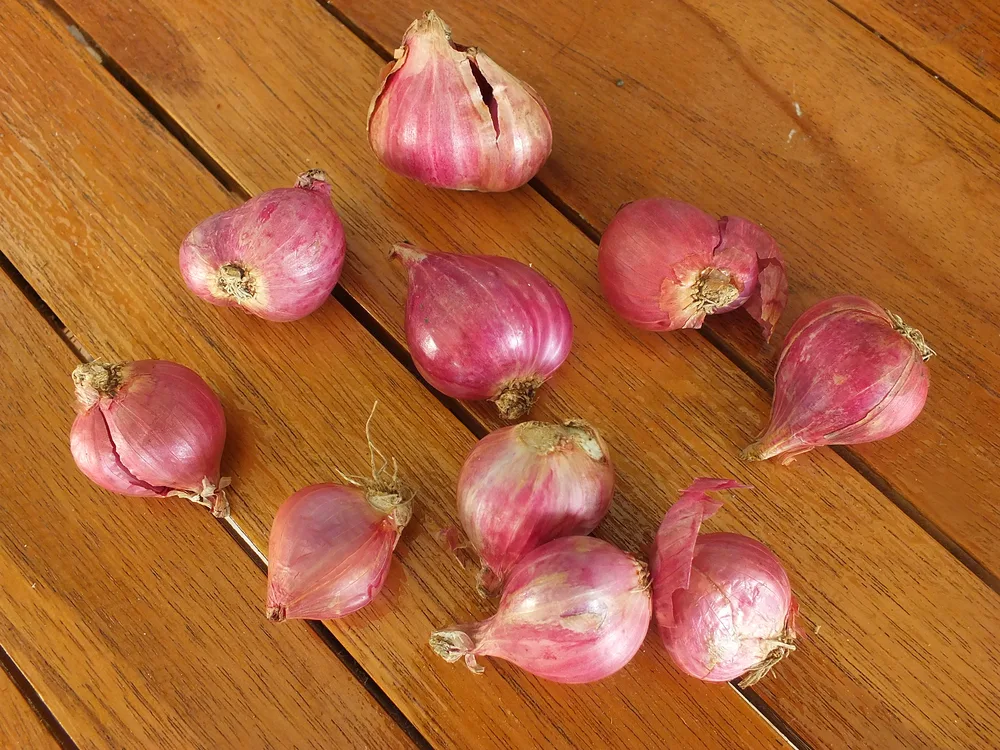
Potato onions (Allium cepa var. aggregatum) primarily reproduce, not by seed, but by bulb division.
Similar to shallots but with a sharper flavor and larger bulbs, potato onions are also called multiplier onions because a single bulb will divide into several new bulbs each season.
At harvest time, you can dig up the entire clump, take what you want to eat, and replant the rest.
Spring Onions
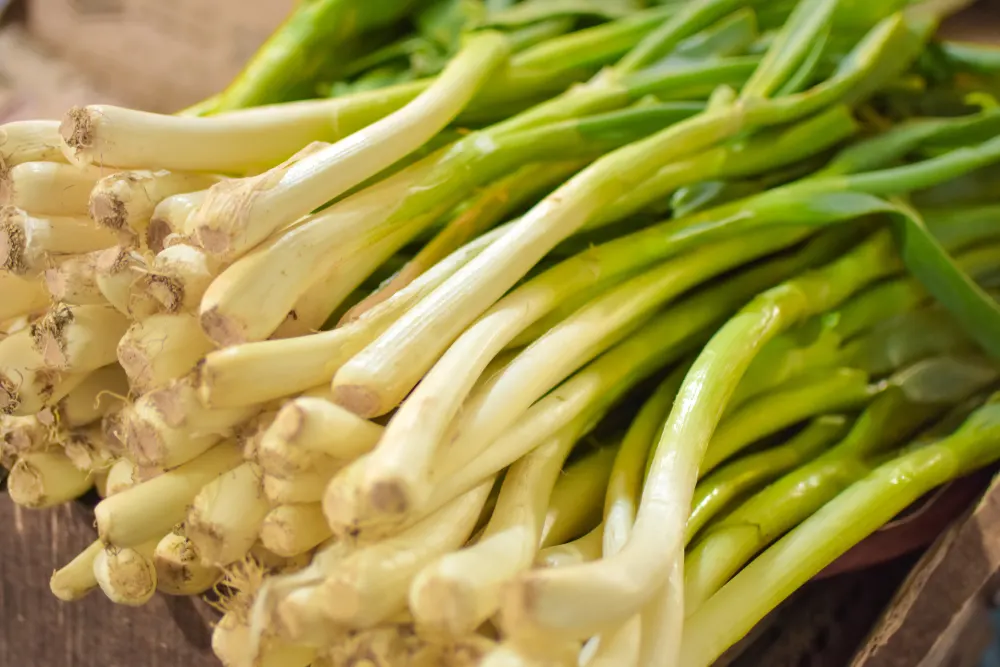
Hardy in zones 6 through 9, spring onion (Allium fistulosum) is a bulbless onion that bears a plethora of tasty hollow leaves that can be harvested early and throughout the growing season.
Commonly called bunching onion, green onion, scallion, and Welsh onion, spring onions are easily propagated by dividing clumping plants each spring and fall.
Onion Growing Conditions:
Hardiness
Grow short day varieties in USDA zones 7 to 9, long day varieties in zones 3 to 7.
Light Requirements
All varieties of onions grow best in full sun.
Soil
Plant onions in loamy, loose, and well drained soil with a neutral pH. Compacted and heavy clay soils can affect how onion bulbs develop.
Watering
The more water it receives, the sweeter the onion will be. Give onion plants 1” or more of water each week.
Fertilizer
Onions are heavy feeders and require a good amount of fertilizer to produce the largest bulbs.
Before planting in spring, prepare the bed by mixing compost into the soil. Add nitrogen rich fertilizer, such as alfalfa pellets, at planting time and every few weeks throughout the season.
Be sure to practice crop rotation each year too.
Companion Plants

Onions have a mutually beneficial relationship with members of the Brassica family, including broccoli, cabbage, kale, and Brussels sprouts. Other bestie options are tomatoes, lettuce, peppers, and strawberry.
Keep onions away from other onion cultivars and members of the Allium genus, like garlic and leeks. Beans, peas, sage, and asparagus don’t make nice with onions either.
Here’s our total guide to onion companion plants and bad neighbors that should be kept far away.
How to Grow Onions
From Seed…
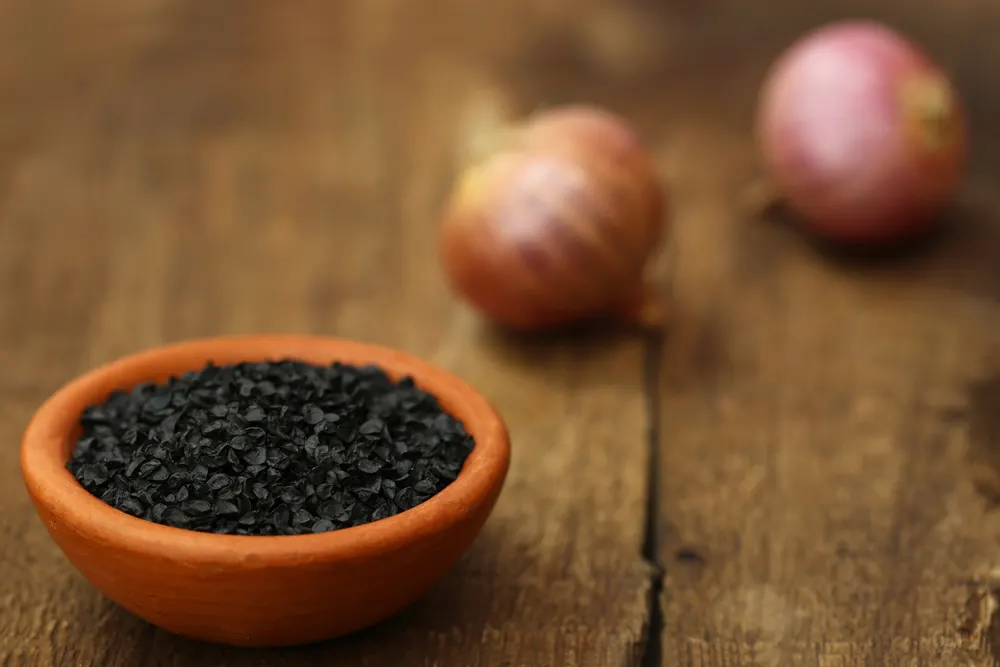
Start onion seeds indoors 6 weeks before the last frost date for your region. It can take up to 2 weeks for onion seeds to germinate but you can speed up the sprouting considerably by keeping the soil warm.
- Always use fresh seeds, since onion seeds are short lived and are less likely to successfully germinate over time.
- To make sewing them easier, consider making your own onion seed tape.
- Fill a flat pan or seedling pots with a good draining, fertile soil. You can use seed starting mix or make your own by mixing together 1 part perlite and 1 part peat moss.
- Sow seeds about 1 inch deep and a ½ inch apart. Gently mist the soil to moisten.
- Place seed flats on top of your fridge to take advantage of its residual heat or use a heating mat like this. Onions germinate quickest at 68°F to 77°F. Cover with a plastic bag to help retain heat and you can see your seeds pop in as little as 4 days.
- Once seeds have sprouted, remove the cover and move to a sunny spot. Check moisture daily and give a light spritz when needed.
- When the green shoots are about 5 inches tall, trim them back to 3 inches.
- When the third leaf appears, onion seedlings are ready to be hardened off and transplanted into the garden.
- Space transplants 4 to 5 inches apart with 12 to 18 inches between rows.
From Onion Sets…
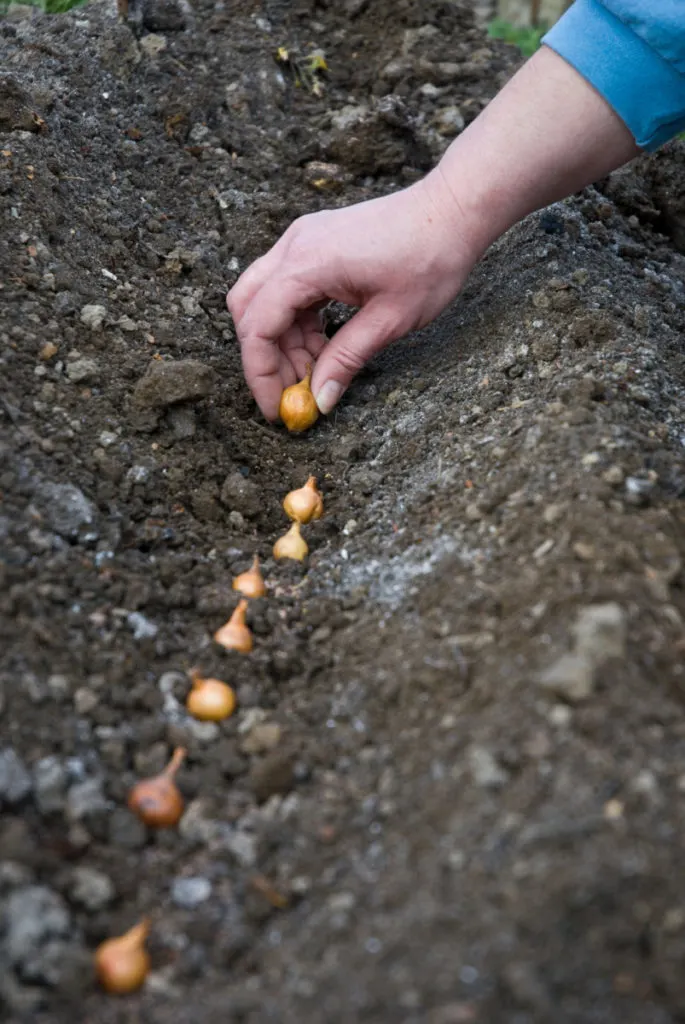
Onion sets – or immature onions – are readily available in spring and can be planted in the soil right away. Although onion sets are the easiest way to start your onion crop, they do not have nearly as much choice of cultivars when compared with varieties purchased as seeds.
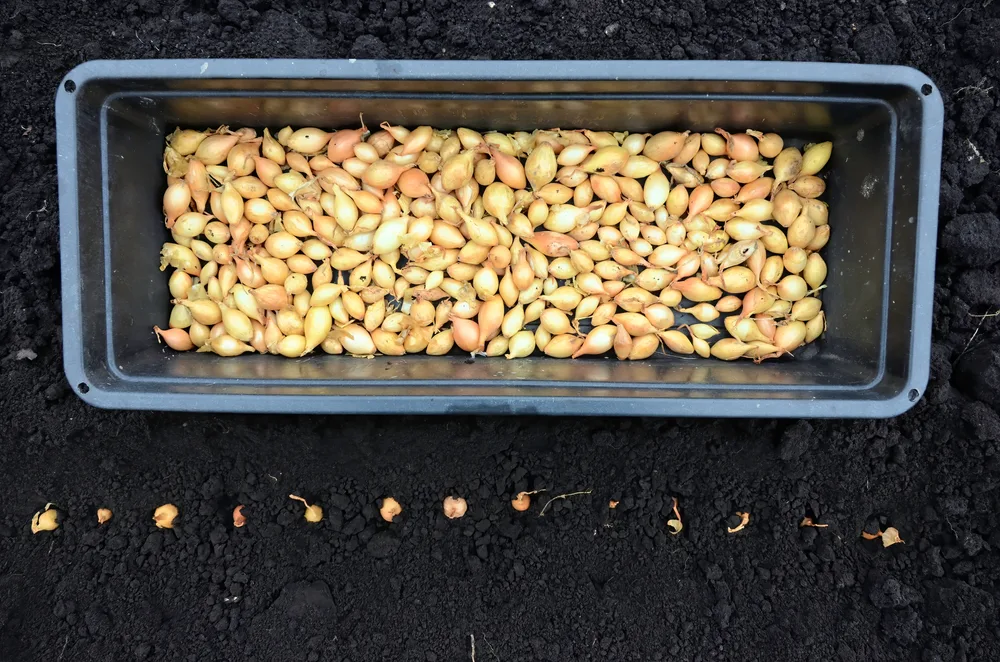
- Work some compost or manure into the soil. You may also add some alfalfa pellets to boost nitrogen levels.
- Plant onion sets no more than 1 inch deep, spacing them 2 to 6 inches apart in rows.
- Onions need a lot of water to swell in size so keep the soil moist throughout the growing season. Alternatively, pre-soak your onion sets.
- Retain moisture and suppress weeds by adding a layer of straw between rows.
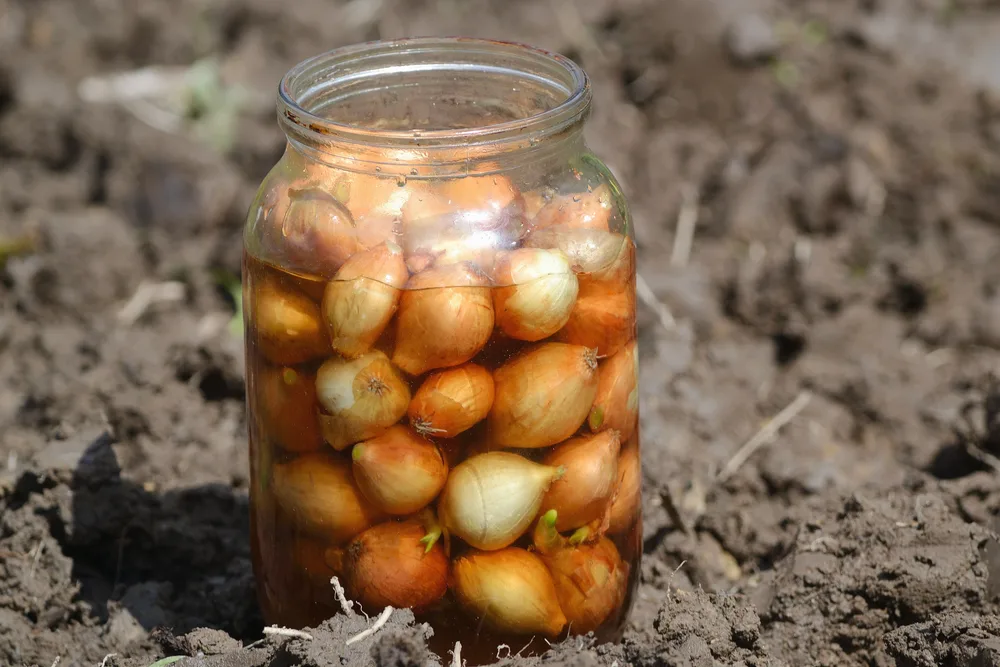
How to Harvest Onions
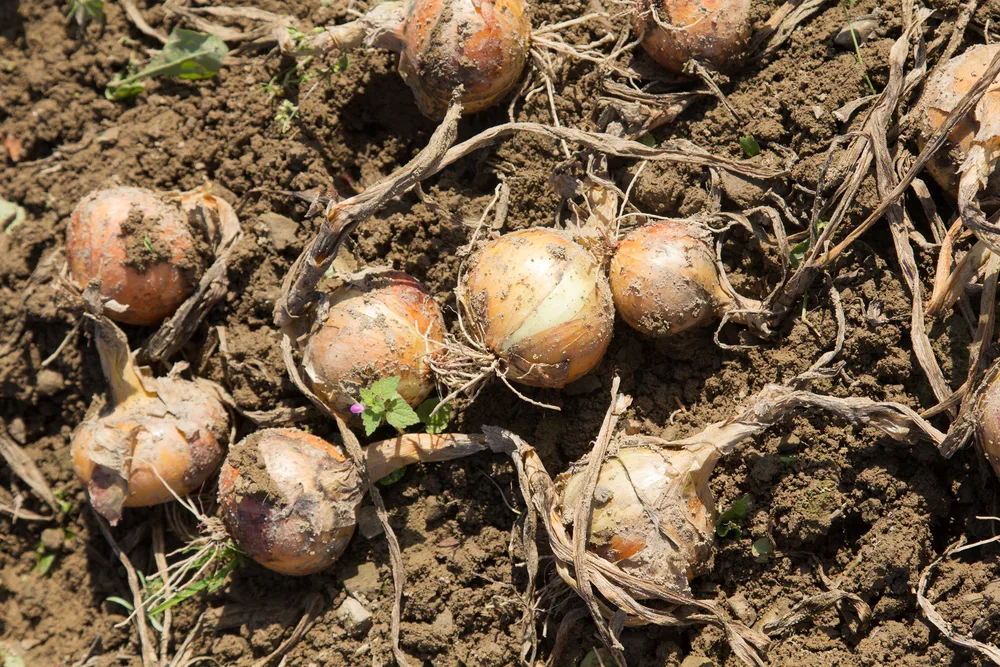
After about 100 to 120 days, your onions should be ready for harvest. You’ll know they are ready when a flower stalk has emerged or their green tops fall over and start to yellow.
If you plan on eating the onion right away, gently loosen the soil around the bulb and pull it up. Fresh onions should be consumed within a day or two.
To prep your onion for longer storage, leave it in the ground but pull back some of the soil around the bulb to expose it to air and encourage drying. After a few days, or when the tops are dry, pull the onions out of the ground.
How to Cure and Store Onions
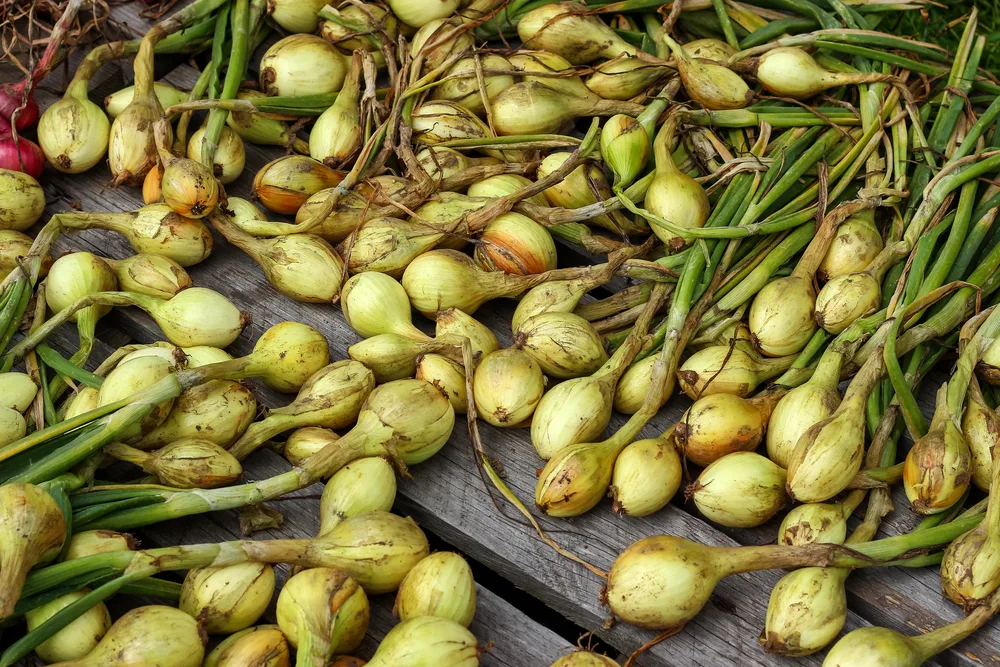
Strong flavored, pungent onions will store longer than sweeter varieties, and when properly cured, can last for up to a year. Eat your sweet onions first before moving on to your storage onions to prevent any food waste.
Provided there is no rain or frost in the forecast, place your freshly pulled onions on dry soil and let them sit in the sun to dry.
After a few days, lay them out on a flat surface in a single layer to fully dry for 2 to 4 weeks. Pick a sheltered spot with good airflow, such as a covered porch or garage.
When handling your onions, be very careful. Any bruise or wounding of this vegetable will encourage rot to set in, which can spread to your whole crop. Only choose the best onions for storage, free of soft spots, mold, and other signs of damage.
Onions are completely dried and cured when the outer skin is papery, the leaves are dry and withered, and the neck (where the bulb meets the leaves) is tight and dry.
At this point you can clip off the roots and cut the tops back to 1 inch and place in a mesh bag or pantyhose in a cool, dry spot. Or leave the tops on and braid the onions together to hang in your kitchen.
Don’t store your onions next to apples or pears, as these fruits will hasten onion spoilage.
Take a look at our complete guide to harvesting, storing and curing onions here.
Alternatively, why not try freezing onions. It’s easier than you think.
Onion Seed Saving
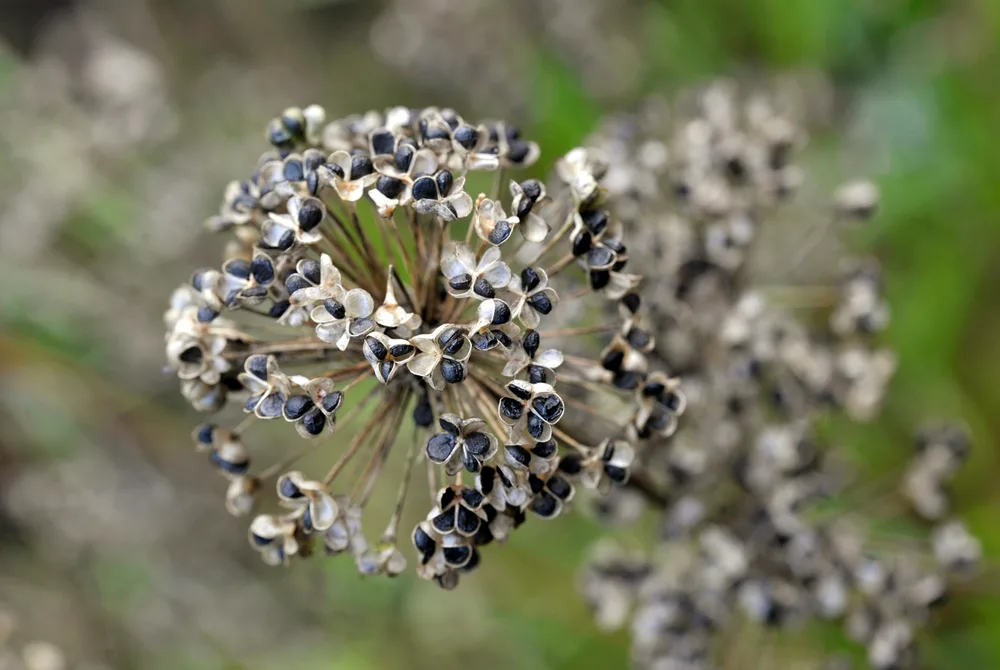
For an endless supply of onions, you can save the seeds from biennial types but only non-hybrid varieties will produce seeds that are true-to-type.
To get started, you’ll need to plant and grow onions as normal during its first season. Harvest some for eating but select a few for seed production.
If you reside in a region where winters are cool but the ground never freezes, you may leave your seeding onions in the ground to overwinter.
In warmer areas or where winters drop below freezing, dig them up and store in a dry and cool spot, ideally between 0°F and 40°F, for 10 weeks. This period – also known as vernalization – is necessary for onion plants to flower the following season.
Replant the onion bulbs in early spring. When plants are established and have grown plenty of green leaves, they will send out flower stalks that bloom into attractive orb shaped flower heads.
When flowers are turning brown, snip them off the plant and place in a paper bag to dry. Set the bag in a cool, dry spot for a couple weeks.
When flower heads are completely dry, shake the bag to help separate the seeds from the chaff. Onion seeds are black and somewhat delicate. Use a mesh screen to remove plant debris.
Store seeds in a cool and dry location and plant them the next spring.
Common Onion Growing Issues
Onion Maggots
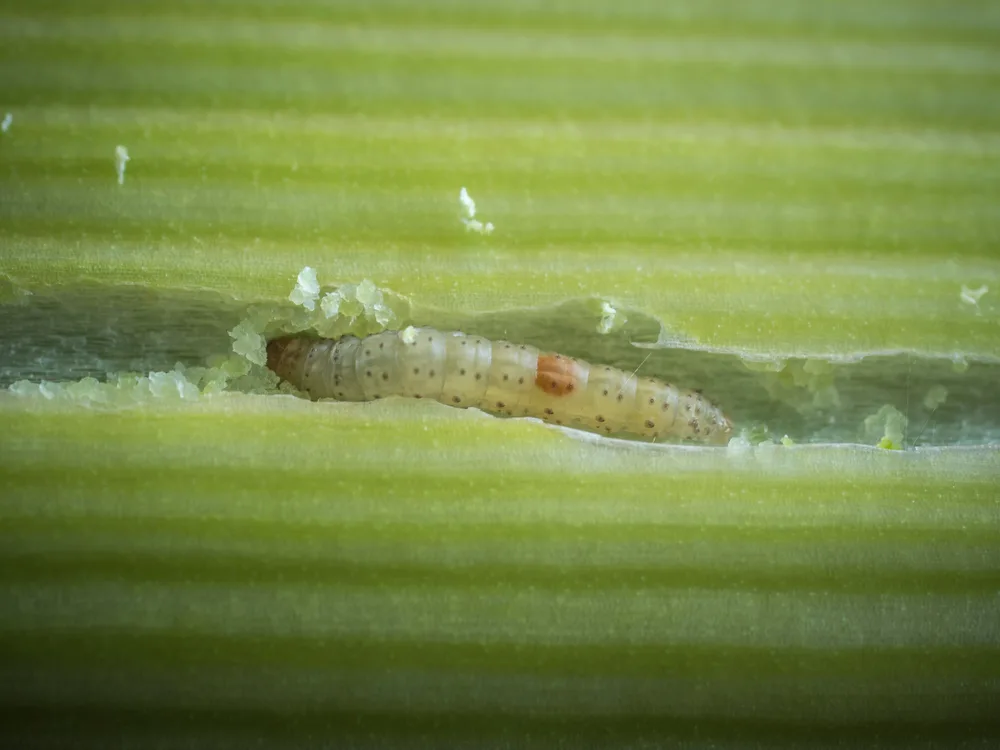
Affecting onions, leeks, garlic, carrots, and parsnip crops, onion maggots lay their eggs on the soil at the base of the plant stem. When the eggs hatch, larvae feed on the roots and the developing bulb or stem, damaging the plant and encouraging disease.
Onion maggots prefer cool, rainy weather conditions. Their eggs cannot survive in soil temperatures of 95°F and dry soils.
To protect against egg laying, cover your seedlings with a very fine mesh netting or floating row covers in early spring, sealing all edges with soil. Once soil temperature rises and crops are larger, you may safely remove the cover.
Practicing crop rotation each year will help reduce onion maggot populations.
Thrips
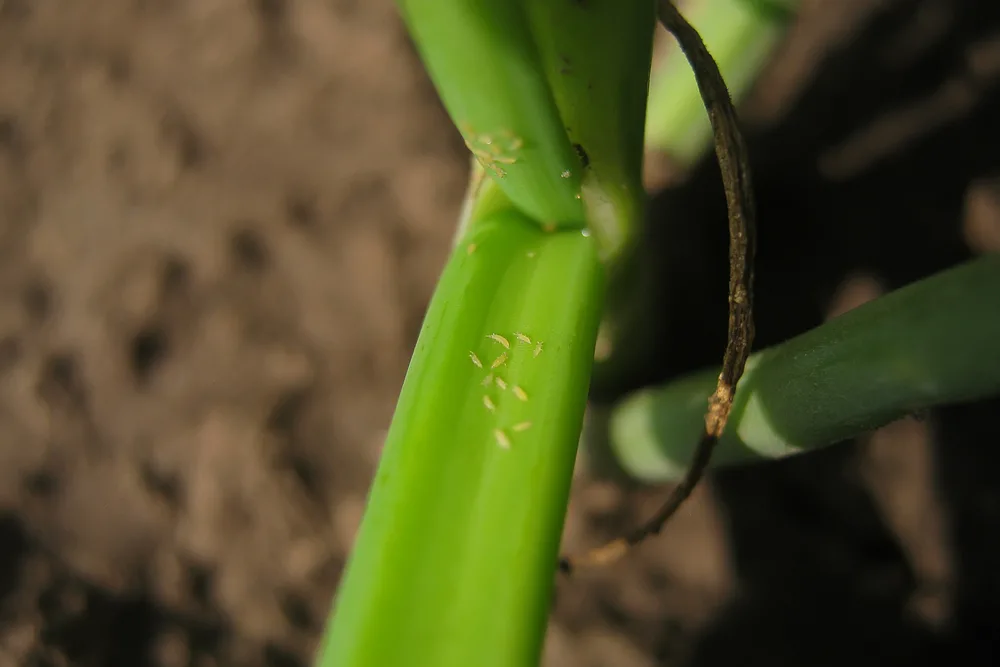
Thrips are tiny, slender, winged insects that puncture plant tissues to suck out the inner cells. Plants attacked by thrips will have discolored leaves, appearing as stippling, flecking, or streaking.
To determine whether your onion plant has thrips, use a dark piece of paper and knock the onion tops against it. If you see light tan colored insects on the paper, you have thrips.
To control thrips, spritz plants with soapy water every 3 days.

Get the famous Rural Sprout newsletter delivered to your inbox.
Including Sunday musings from our editor, Tracey, as well as “What’s Up Wednesday” our roundup of what’s in season and new article updates and alerts.

